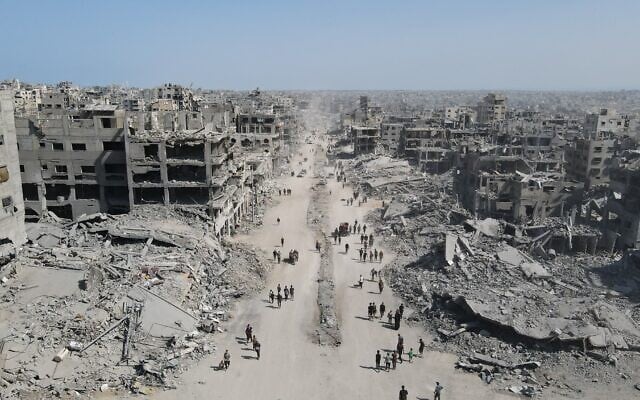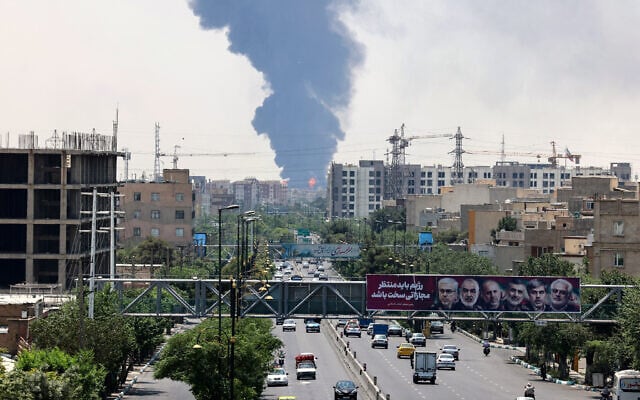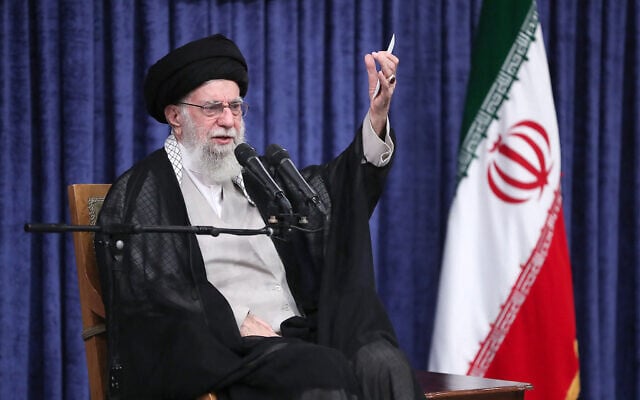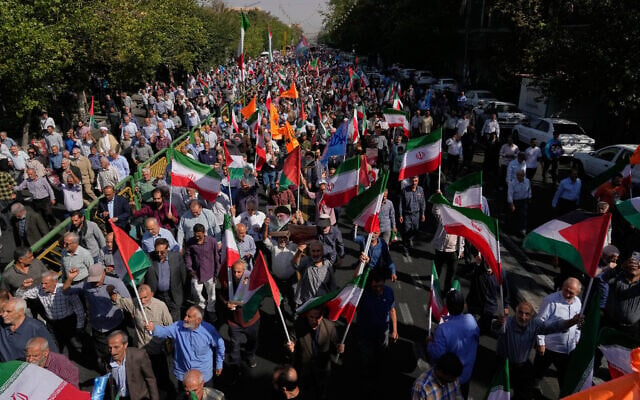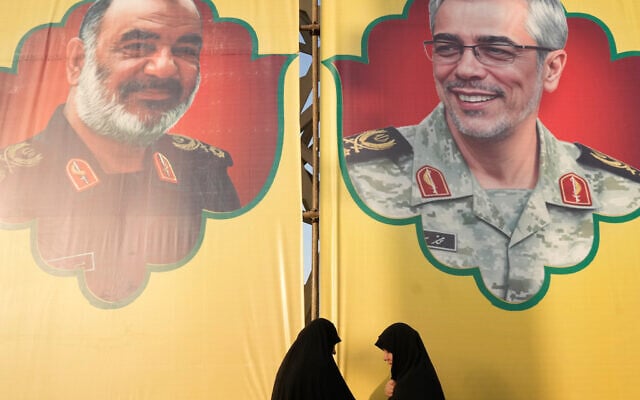

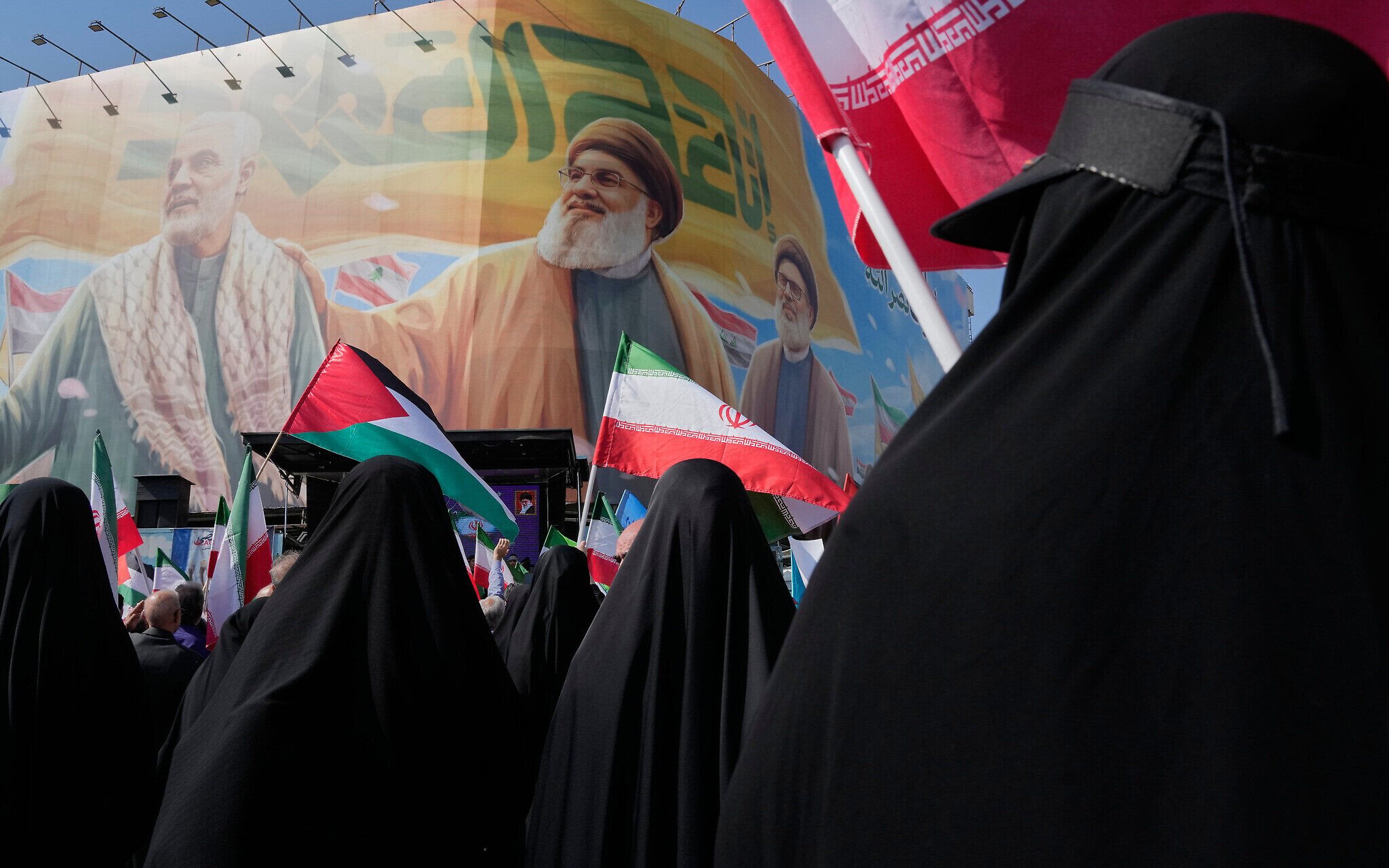
As the Middle East broadly welcomes the first phase of a ceasefire in the Israel-Hamas war in Gaza, Iran finds itself at one of its weakest moments since its 1979 Islamic Revolution.
Tehran, which is sworn to destroy Israel, has operated its self-described “Axis of Resistance” over several decades, supporting terror groups and nations allied with it against Israel and the United States.
But as Israel launched its offensive in the Gaza Strip following the devastating Hamas onslaught of October 7, 2023, it also turned its crosshairs toward terror leaders elsewhere in groups like Hamas, Lebanon’s Hezbollah and even the top echelon within Iran’s military and nuclear program — killing many and disrupting their ability to fight back.
As US President Donald Trump prepares for a Middle East trip that likely will see him praised by Israel and Arab nations, Iran won’t be at the table as it still struggles to recover from June’s 12-day war.
How Tehran’s theocracy responds in the weeks and months ahead, whether that means lashing out or trying to rebuild its hobbled economy at home, will be crucial.
“Undoubtedly this is a not a proud moment for Iran,” said Ali Vaez, the Iran project director at the International Crisis Group. “Its alliance system in the region is in ruins but it doesn’t mean that the ‘Axis of Resistance’ is no more.”
Iranian state media has sought to describe the Gaza ceasefire as a victory for Hamas, despite the war destroying most of the Gaza Strip and killing over 67,000 Palestinians, according to the terror group’s Health Ministry, which doesn’t differentiate between civilians and combatants but says around half the dead are women and children. The figures cannot be independently verified.
Iran’s Foreign Ministry welcomed “any decision… that guarantees halting the genocide of Palestinians.”
Iranian Foreign Minister Abbas Araghchi reiterated that on Saturday, telling state television that Hamas decided to accept the deal and that Tehran has “always supported any plan, any action that led to the halt of crimes, genocide” by Israel against Gaza. Israel denies committing genocide in Gaza and accuses Hamas of using Gaza’s civilians as human shields.
Perhaps more tellingly, an adviser to Iran’s 86-year-old Supreme Leader Ayatollah Ali Khamenei suggested the ceasefire would only lead to conflict elsewhere in the region.
“The start of the ceasefire in Gaza may be the behind-the-scenes end of the ceasefire somewhere else!” Ali Akbar Velayati, an adviser to Khamenei, wrote on X, referencing Hezbollah, Yemen’s Iranian-backed Houthi rebels, and militias in Iraq.
The fear of further Israeli strikes, particularly on Iran, remains acute in the Iranian public’s mind as much of Tehran’s air defenses likely were destroyed by Israel in June.
Khamenei has not resumed his usual routine of weekly speeches to audiences. Without explanation, Iran avoided holding a major military commemoration marking the end of the Iran-Iraq war in September, which typically sees top officials watch drones and missile launchers parade past them.
Iran’s economy also has suffered under international sanctions and the fall of global energy prices.
“Iran has always focused on its interests, we do not have resources anymore, our economy has weakened,” said Tehran-based analyst Saeed Leilaz. “Our support to Hamas was a reaction to US to divert conflicts from our borders.”
Others are less optimistic.
“Iran is like a bankrupt gambler after winning some small money in the first rounds,” said Amir Kazemi, a university student in Tehran. “When Hamas attacked Israel, Iran was happy about it. But now, after the ceasefire, Iran finds nothing in its pocket.”
In the immediate years after Iran’s revolution, its theocratic government sought to export its Shiite revolutionary ideology more widely in the Middle East. That morphed following its devastating 1980s war with Iraq into more of an effort to provide a level of deterrence as Arab nations around it purchased sophisticated American bombs, warplanes and tanks that Tehran couldn’t access due to sanctions.
The US military’s presence across the Persian Gulf also expanded following the 1991 Gulf War, with Arab nations granting basing rights to American forces to Tehran’s constant anger.
The peak of the “Axis of Resistance” came in the chaotic years after the 2003 US-led invasion of Iraq and Yemen’s subsequent collapse into a civil war. Then, Iran could count on Hezbollah, Syrian autocrat Bashar al-Assad, the Houthis, Iraqi terror groups, and even Hamas — a Sunni terror group.
Today, the Mideast looks far different. Syrian rebels overthrew Assad last year, Israeli strikes killed top leaders of Hamas and Hezbollah, and Iraq’s pro-Iranian militias faded into the background. Yemen’s Houthis, while still capable of launching attacks on Israel and commercial shipping in the Red Sea corridor, find themselves now targeted by increasingly precise Israeli strikes.
And the 12-day war in June left Iran likely no longer enriching uranium for its nuclear program, which the West long has worried could be weaponized. The war also abruptly ended US-Iran nuclear negotiations that had begun some two months prior.
While Iran publicly denies seeking nuclear arms, it had amassed uranium enriched to a degree with no civilian application. According to Israel, Iran had taken steps toward imminent weaponization when the IDF launched the opening strike of the Israel-Iran war on June 13.
Iran, meanwhile, has yet to receive any major support from either China or Russia, despite providing Beijing with likely discounted oil and Moscow with the drones it uses in its war on Ukraine.
Tehran has also shied away from confronting women who are increasingly abandoning the mandatory hijab, or headscarf, instead executing prisoners it already holds at a rate unseen in decades.
“The ceasefire is reflective of Tehran’s collapsing regional clout following the unraveling of its long-powerful ‘Axis of Resistance’ since 2024,” said Ali Fathollah-Nejad, the director of the Berlin-based Center for Middle East and Global Order. “The ceasefire will free Israeli military capacities that would now be used against Iranian interests — whether in Lebanon against Hezbollah or directly against Iran.”
For his part, Trump seized on Iran accepting the ceasefire as “terrific” news. However, there’s been no move toward renewed public negotiations with Tehran over its nuclear program.
“Time is not on Iran’s side but their problem is no one is really giving them an exit ramp,” Vaez said. But whether Tehran would take the ramp also remains in question as its leaders still debate what turn to now take.


